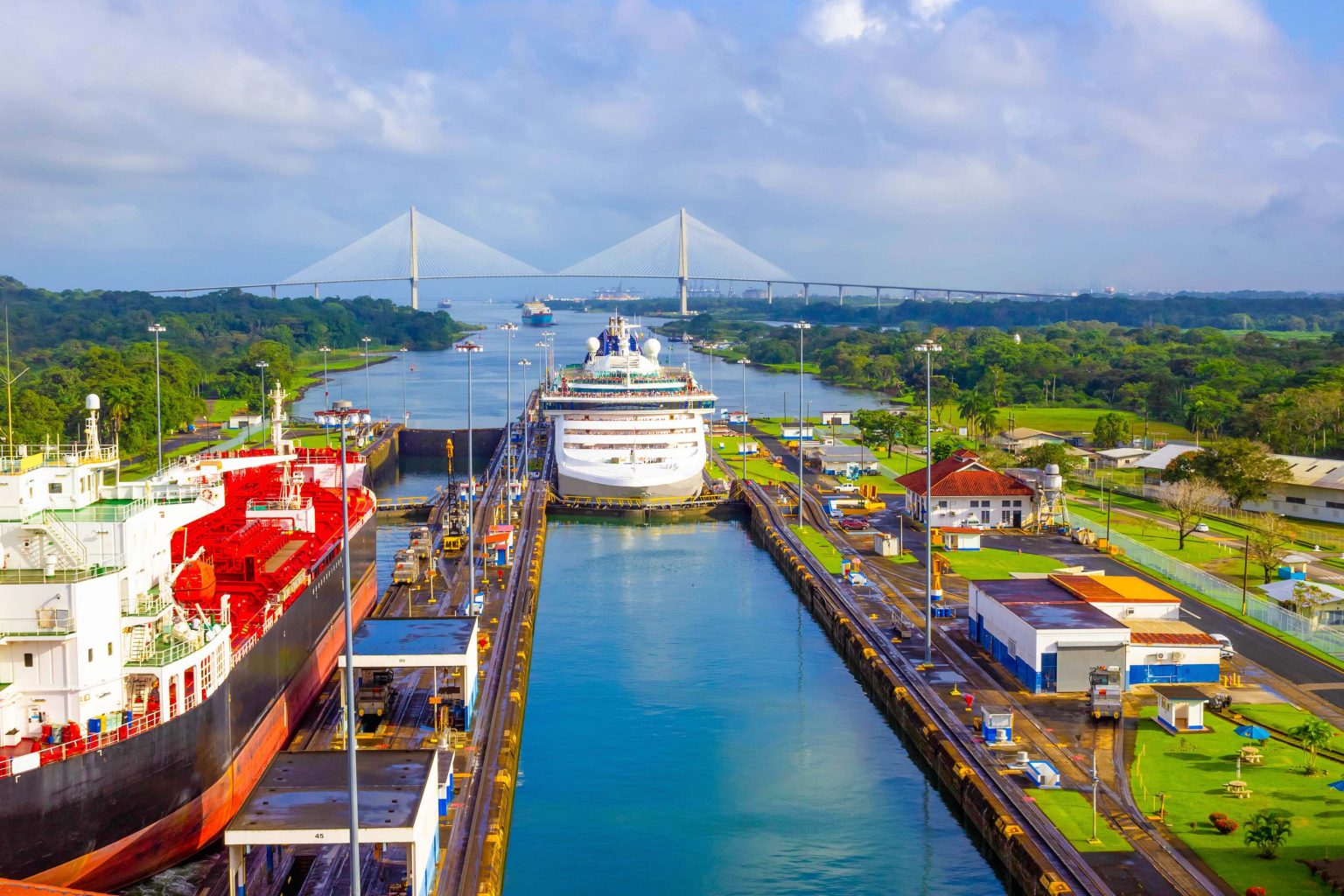Panama Canal Facts

Today, the Panama Canal stands as a testament to the engineering capabilities of the modern world. Cutting across the Isthmus of Panama, the canal allows ships to pass between the Atlantic Ocean and the Pacific Ocean in a matter of hours. Learn more about this wonder of modern engineering with these 40 Panama Canal facts.
- 01The Panama Canal cuts across 82 km of the Isthmus of Panama to link the Pacific Ocean and the Atlantic Ocean together.
- 02In its first year of operation alone, an estimated 1000 ships passed through the canal.
- 03Today, an estimated 15,000 ships pass through the canal every single year.
- 04Statistics estimate that over 333 million tons of shipping have passed through the canal since its opening.
- 05In terms of ships, that means over 800,000 ships have passed through the canal since it first opened.
The first attempts to dig the Panama Canal faced major difficulties.
Ironically, this became the case despite the French’s recent experience in digging the Suez Canal. Among these difficulties included the tropical climate, as well as the rainforests which dominated the landscape. Both caused diseases to break out among the workers, such as malaria and yellow fever. Together with hostile native wildlife, which included venomous snakes and spiders, on average, 200 workers died every month.
The French also failed to take into account the local geography, again in comparison to the previous Suez Canal project. While the Suez had a generally flat geography, Panama actually inclined upwards to the Pacific Ocean by a total of 26 meters. The nearby Chagres River also caused major flooding during the rainy season. All this meant that progress became nonexistent, draining money and manpower for nothing in return.
The Panama Affair damaged France’s efforts to dig the Panama Canal.
To keep the project going, Ferdinand de Lesseps downplayed the manpower costs in France. This allowed him to maintain a steady flow of recruits for workers, but a lack of progress meant that eventually, the money spent would need an accounting.
This took place in 1889, and the Panama Canal Company finally declared bankruptcy in 1892. An estimated 800,000 investors lost their money, which amounted to 1.8 billion Francs. This then led to accusations that certain government ministers had taken bribes from de Lesseps. The bribed ministers had then covered up the company’s financial problems and contributed to its bankruptcy. This led to a series of trials in 1893, which saw de Lesseps and several of his co-defendants imprisoned. Others either committed suicide or fled to exile in Britain to avoid their day in court.
The first American efforts to dig the Panama Canal caused a war in the region.
The Americans first began work on their project in 1902 but faced opposition from Colombia, which controlled Panama at the time. This led to the US supporting local rebels against the Colombian government. US President Theodore Roosevelt also sent troops to fight alongside the rebels and even sent the US Navy to blockade Colombia.
With Colombia still recovering from a recent civil war, they had no choice but to accept Panama’s independence, even if they didn’t officially recognize it until 1921. The new Panamanian government then signed an agreement with the US, allowing them to dig the canal through their country. More than that, they gave the US complete control of the canal, in exchange for regular lease payments.
The Americans repeatedly revised plans and designs for the canal.
The Americans bought the French assets in Panama in 1904 and immediately started making changes. First, they expanded the support infrastructure for the workforce, building not just residential areas, but also water plants, machine shops, and even cafeterias. They also expanded the nearby Panama Railway, which the Americans saw as important in moving needed supplies and men to the canal. A fumigation program also took place, along with other measures to prevent tropical diseases.
The Americans also recognized the geographical challenges of the region and abandoned French plans for a sea-level canal. Instead, they designed the modern canal’s lock system, raising and lowering ships along a series of artificial lakes, to compensate for the local geography.
Work on the canal led to the development of the biggest floating cranes at the time.
The workers called them Ajax and Hercules, named after two of the strongest heroes in Greek mythology. The Americans commissioned them from the German company Deutsche Maschinenbau AG in 1913, for an estimated $800,000 each. Work on the cranes finished in 1914, and they arrived in Panama during the same year. Each of the cranes weighed an estimated 4000 tons and towered 46 meters high. Both also depended on charcoal-fired boilers to operate their machinery.
Ajax and Hercules moved and installed the locks of the Panama Canal, and later on, provided ship repair and canal maintenance duties. Ajax later got sold to Venezuela in 1955, while Hercules received a modernization program in 1966. Hercules finally found itself placed on reserve in 1996, while a new crane, Herman the German, took over its duties.
